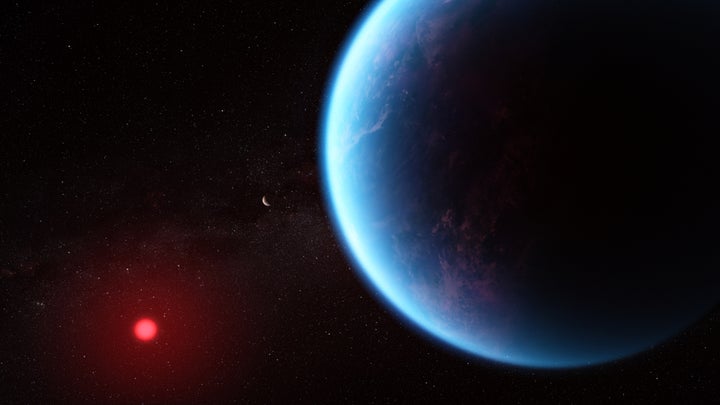
We might not be alone in the universe after all, according to the latest findings of NASA’s James Webb Space Telescop.
Yep, the device has detected carbon dioxide and methane in the atmosphere of exoplanet K2-18 b, without ammonia present.
This means life could be possible on K2-18b.
And, to make the discovery even more exciting, there could even be a molecule called Dimethyl sulfide (DMS), which is only produced by life on Earth – although such a discovery is yet to be confirmed.
NASA explained in a press release: “The bulk of the DMS in Earth’s atmosphere is emitted from phytoplankton in marine environments.”
Scientists are hoping that more observations through the telescope will be able to explain if DMS is present.
This chemical makeup could also indicate the presence of an ocean underneath the planet’s atmosphere.
Almost nine times bigger than Earth, the exoplanet is 120 light years from Earth in the constellation of Leo.
It orbits a cool dwarf star called K2-18, and sits in the habitable zone – a region around the star where planets with liquid water may be.
NASA described it as an “Hycean exoplanet,” which is “one which has the potential to possess a hydrogen-rich atmosphere and a water ocean-covered surface”.
The press release also explained: “The suggestion that the sub-Neptune K2-18 b could be a Hycean exoplanet is intriguing, as some astronomers believe that these worlds are promising environments to search for evidence for life on exoplanets.”
This exoplanet could have a large mantle of high-pressure ice like Nepture, but most likely has a thinner hydrogen-rich atmosphere and ocean surface – although this particular ocean is probably too hot to be able to host life.
Team member Subhajit Sarkar of Cardiff University said: “Although this kind of planet does not exist in our solar system, sub-Neptunes are the most common type of planet known so far in the galaxy.
“We have obtained the most detailed spectrum of a habitable-zone sub-Neptune to date, and this allowed us to work out the molecules that exist in its atmosphere.”
Of course, even if all of these chemicals are actually present on the planets, there’s no guarantee this means NASA has found some companions in this universe.
It’s also not the first time scientists have found elements which would support life on other planets.
NASA previously found indications of water vapour on the smaller exoplanet HAT-P-11b, in the constellation Cygnus, around the size of Neptune, 120 light years away.
But, as Nikku Madhusudhan, an astronomer at the University of Cambridge and lead author of the paper, said: “Our ultimate goal is the identification of life on a habitable exoplanet, which would transform our understanding of our place in the universe.
“Our findings are a promising step towards a deeper understanding of Hycean worlds in this quest.”
